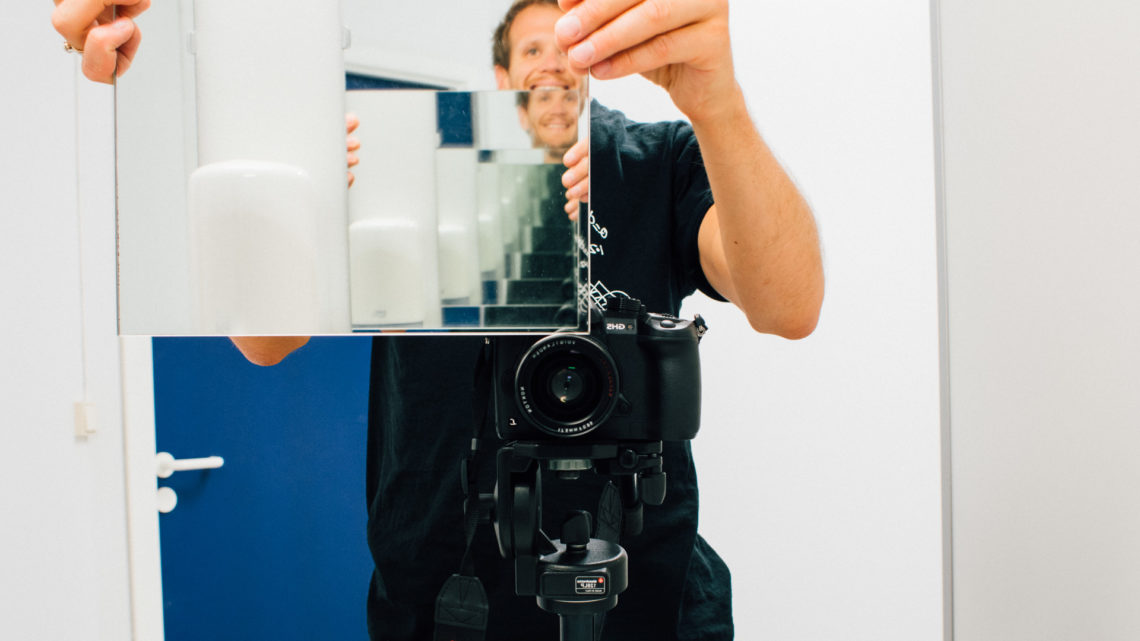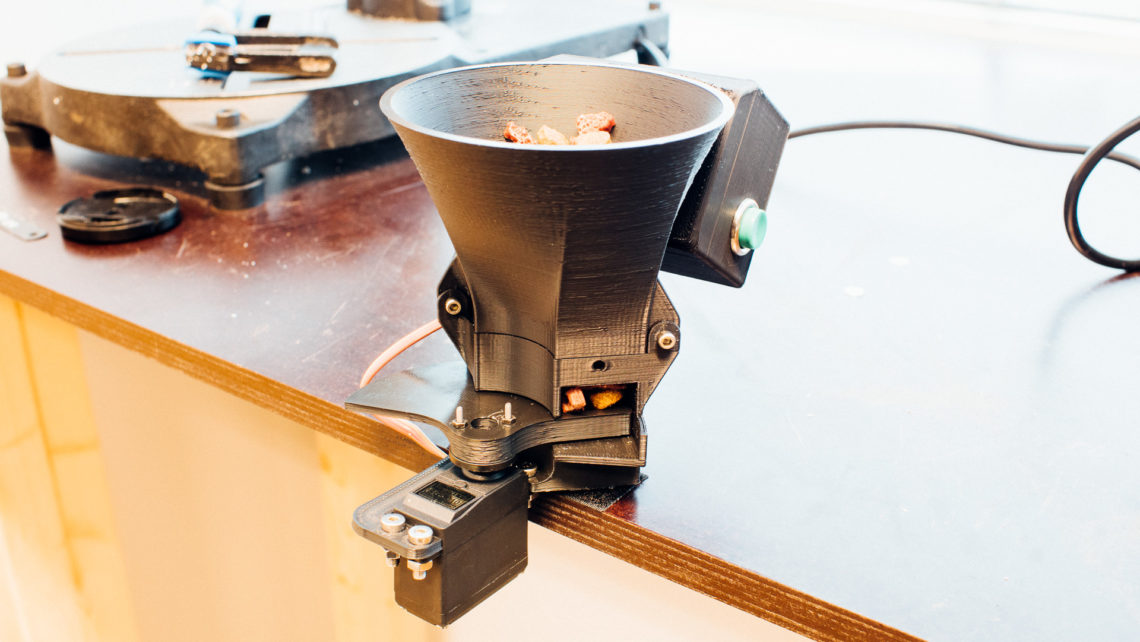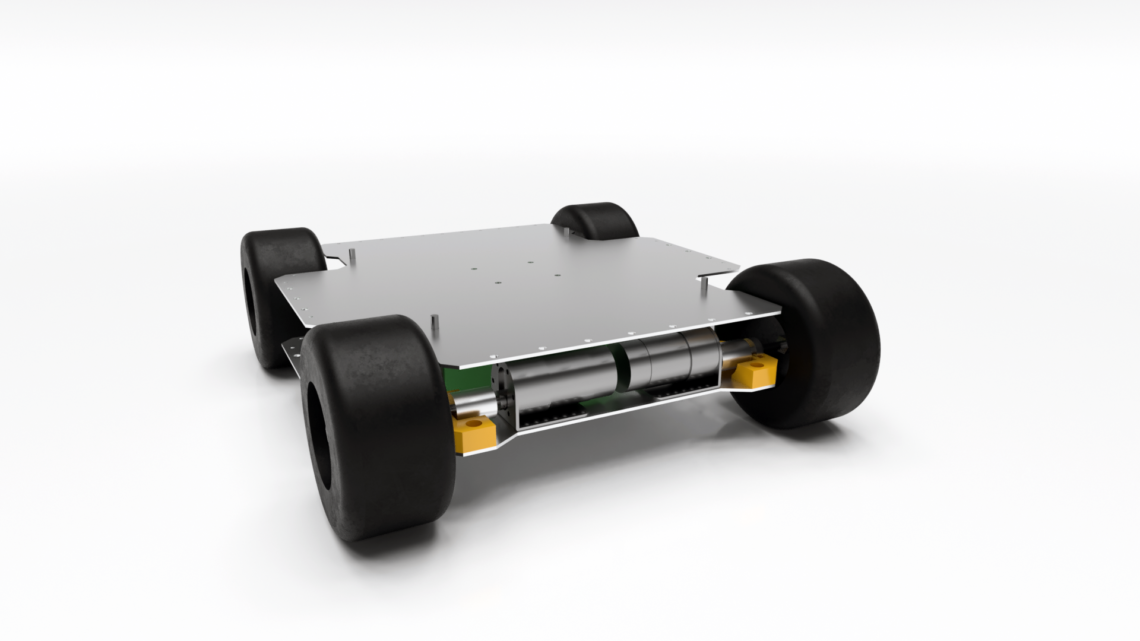As a part of a new project, we wanted to use an old VHS player as a trigger for various actions. We wanted the system to trigger when a VHS cassette was pushed into the player, as if one wanted to play it.
There are a couple of approaches we could take to this problem:
- Connect to the screen and look for changes indicating that a cassette was inserted.
- Find a switch or other electronics inside the VHS player which would indicate the insertion.
- Insert a switch into the VHS player, which is pressed when the cassette is inserted.
The easiest solution would be to find the switch that the VHS player itself uses to detect a cassette. We were not able to find this switch, so we chose to insert out own switch. We chose a microswitch equipped with an “arm” for this purpose.
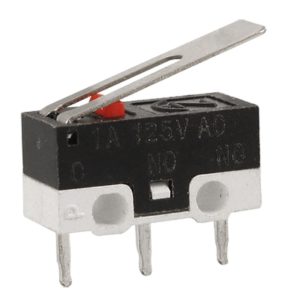
The next thing we needed to find was a good place to mount the switch. We opened up the VHS player to look at the insides.
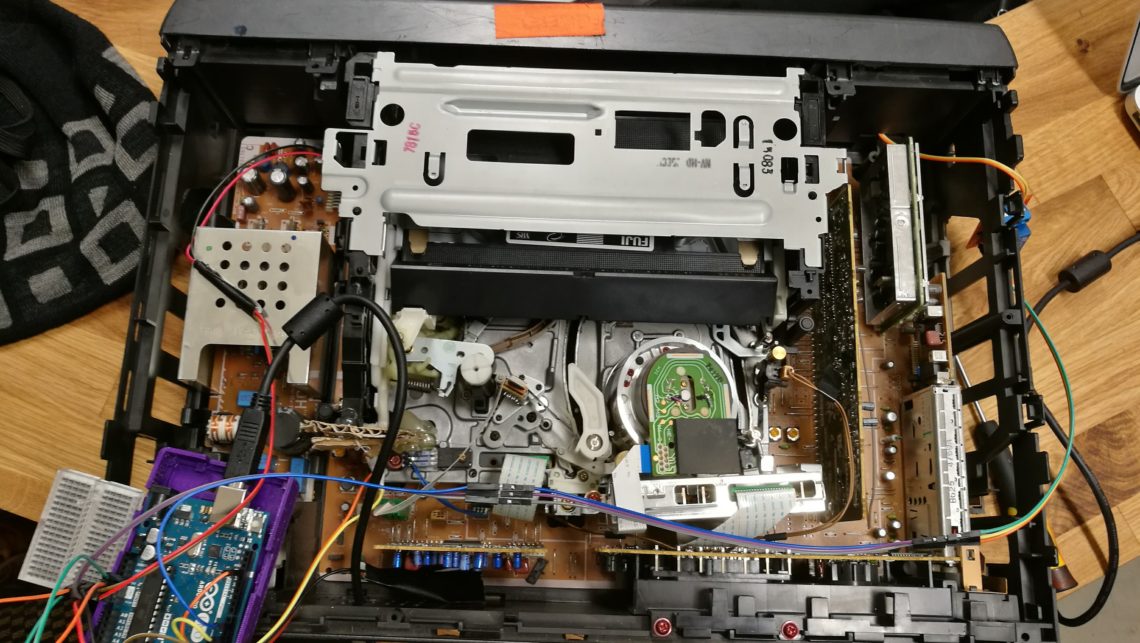
We inserted a VHS cassette and investigated how the mechanical parts moved when it was fed into the player.
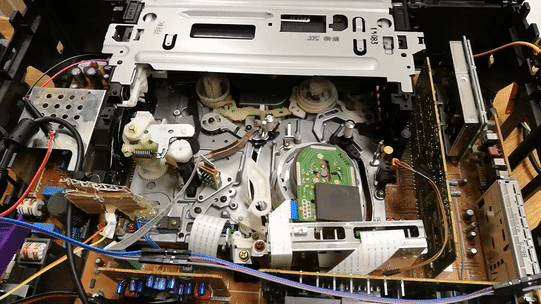
The white plastic arm seemed to able to push the switch if we mounted it correctly. We supported the microswitch with some cut out cardboard, and glued it in place using hot glue.
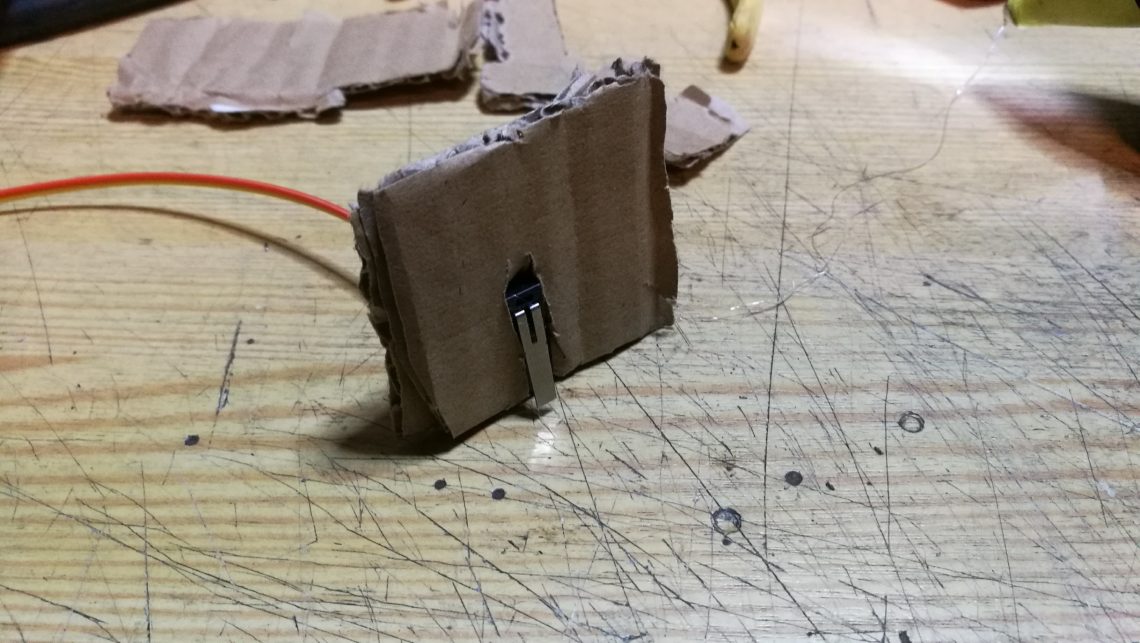
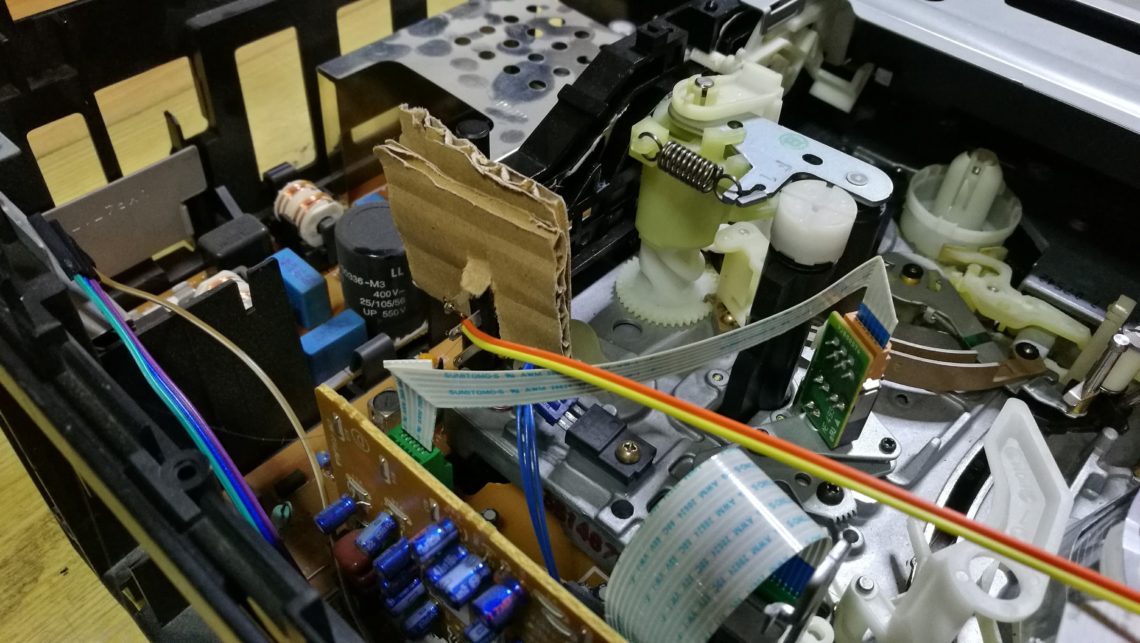
Now that we have something to tell us when the VHS cassette is in, we also wanted the ability to eject the cassette automatically. We broke some plastic parts until we found the PCB behind the front control panel. Here we soldered one wire to each pin of the eject button.
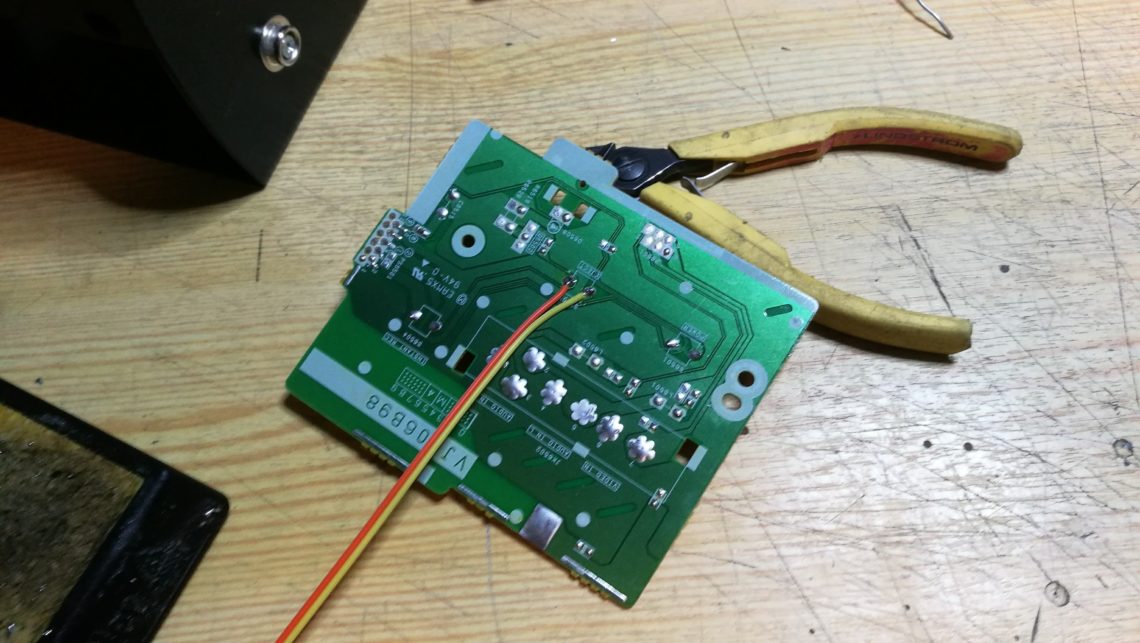
We connected these wires to a relay, which makes us able to short circuit the button and trick the VHS player into believing that someone just pushed the button.
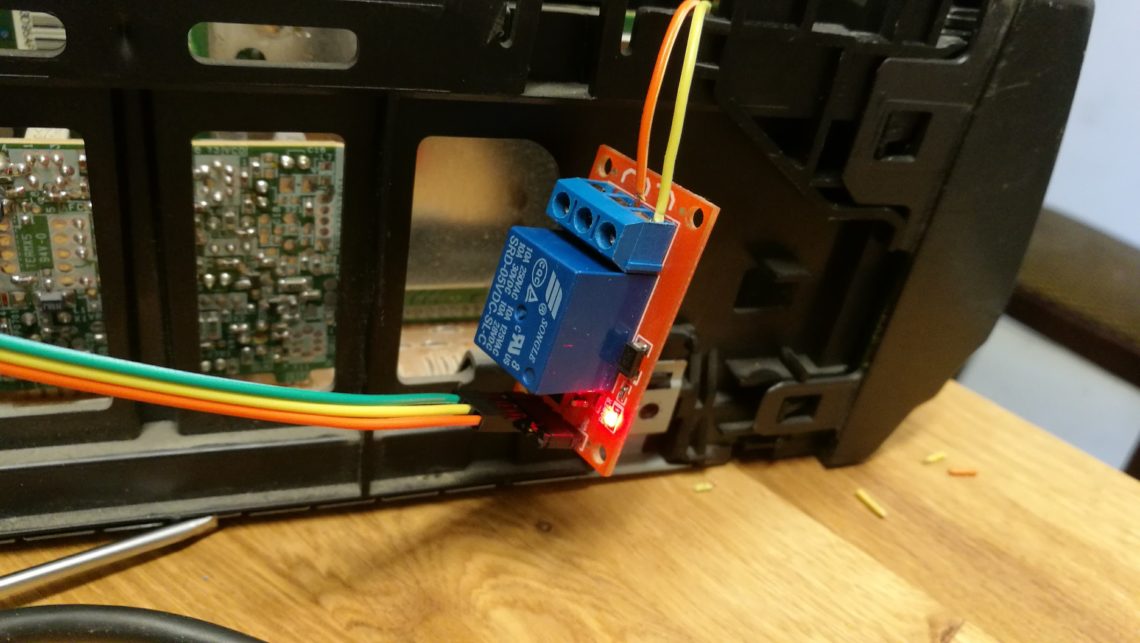
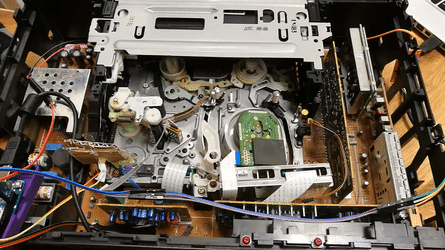
The button and relay was then connected the the oldie but goodie Arduino Uno. The Arduino program reads the button, as well as control the eject function. We powered the Arduino with a random 5v pin we found on the PCB of the VHS player.
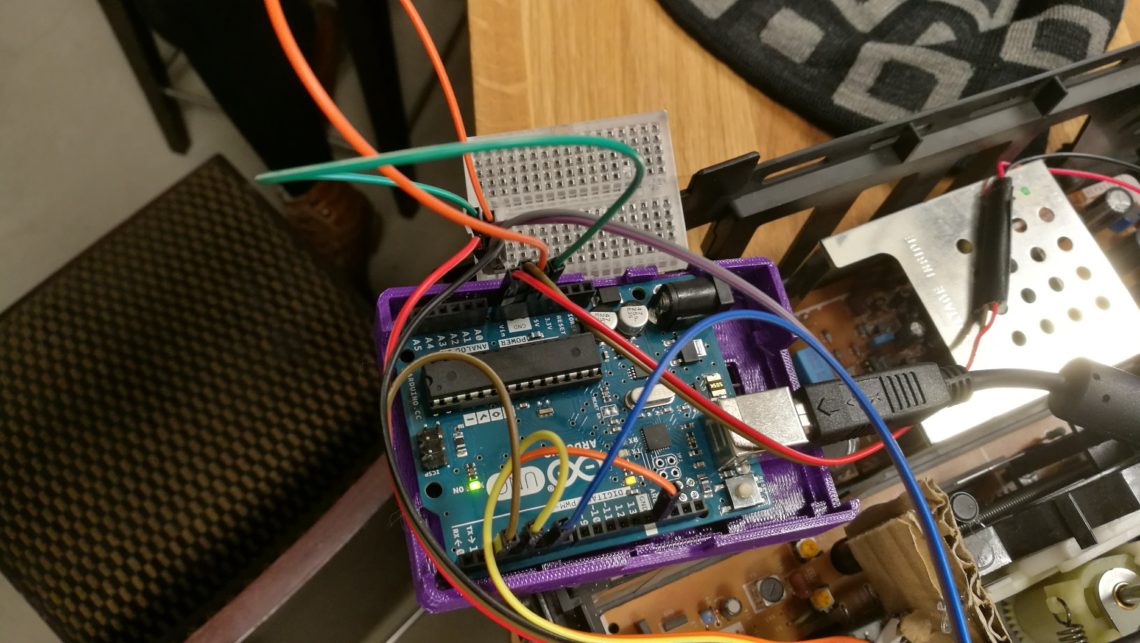
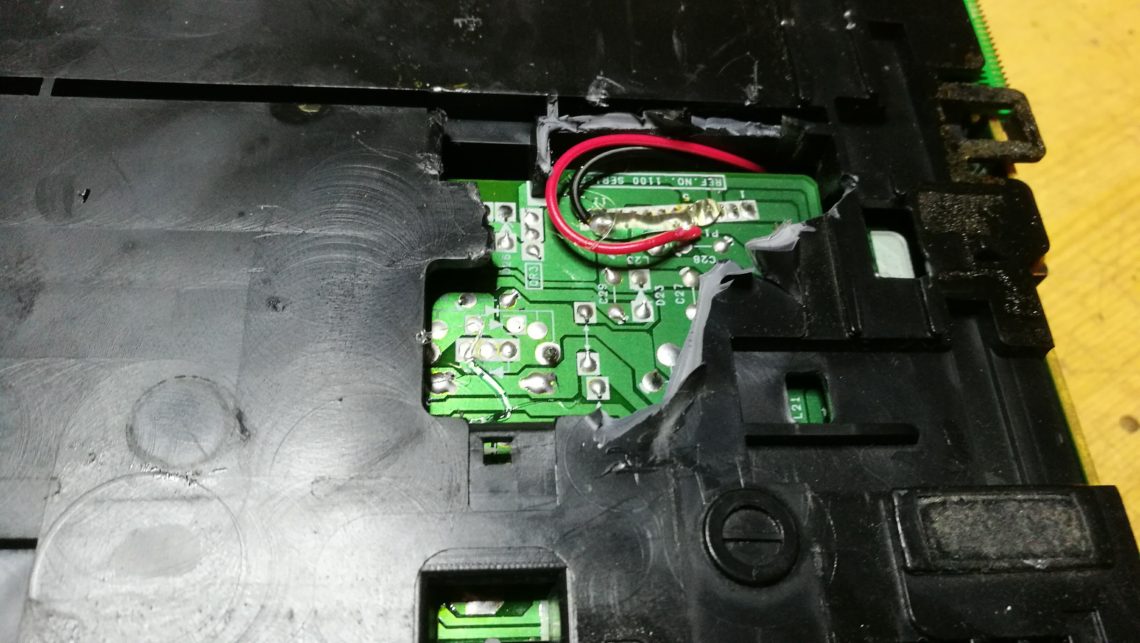
Now that we can detect the insertion and control the ejection of a VHS cassette, we can use it as a trigger for many things.
At this time, we are controlling a 220V relay which turns on spinning lights and an alarm speaker. The 220V relay is a wireless Nexa receiver, which we control using a 433 Mhz transmitter. This method is the same as we used in the Wake-a-tron 3000 system in a blog post from last year.

